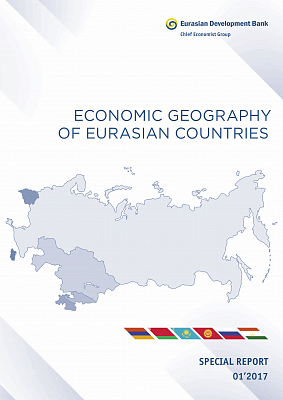ECONOMIC GEOGRAPHY OF EURASIAN COUNTRIES

-
Full text
PDF, 453.54 Kb
Eurasian countries are endowed with a unique geography that differs from other regions in the global economy and determines the specifics of economic development and integration in the Eurasian space. In Eurasia, four of the five EAEU countries (five of the six EDB Member States) have no access to World Ocean spaces, which necessitates the creation of transport corridors and strengthening of inter-regional ties so that the distance barriers can be overcome.
In addition to the development of transport infrastructure, foreign economic policy, particularly regional integration, can play an important role in the neutralization of the factor of remoteness from ocean spaces. Due to the continentality of Eurasian geography, economic integration becomes an even more crucial task for Eurasian countries than for those with access to the World Ocean and with lower costs of delivering their products to the world markets.
